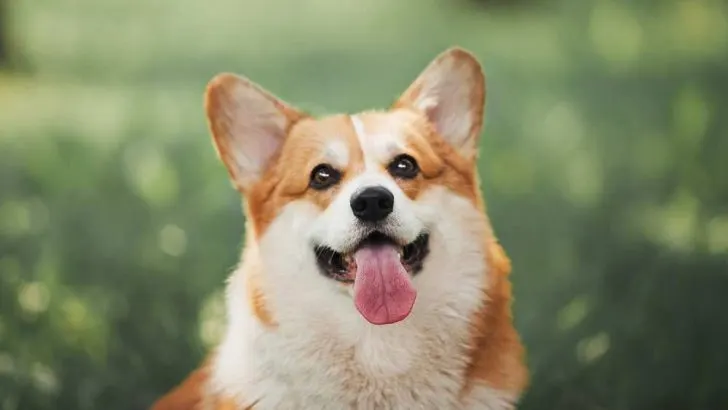Corgis are possibly the cutest creatures on earth. These fluffy dwarfs were used for centuries as herding dogs.
They nipped at the heels of livestock to keep them on the move, and they did it on their tiny, stubby legs. Honestly, there’s little this dog can’t do.
Corgis are playful and loyal, but they’re also stubborn, loud, and they sure have the confidence of a much larger breed. And don’t get us even started on food – they LOVE to it.
Speaking of which, have you ever wondered what happens if they overeat? Because, as you may already know, these adorable little troublemakers are prone to several different diseases. Is bloat one of them?
Do Corgis get bloat?
If your corgi is experiencing tummy problems because he ate too much too fast, you probably want to scratch out bloat from your list of diseases.
That’s why you should continue reading this article, as we’re sure you’ll find everything you need to know. Ready when you are!
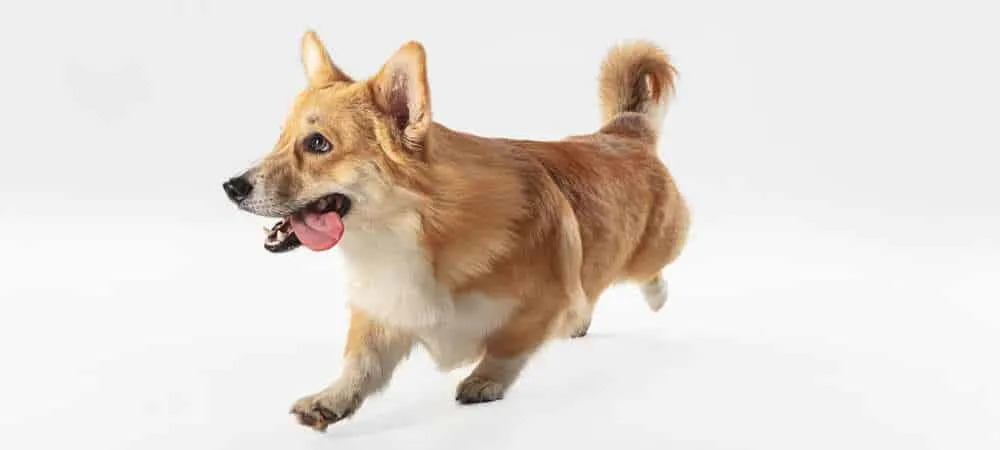
Can Corgis Get Bloat?
Bloat can happen to any dog breed at any age. Therefore, corgis are no exception to this medical condition.
As a matter of fact, there were cases where corgis have died because of a bloated stomach. But those were one in a million cases.
Don’t get us wrong; when it comes to corgis, you should always be on standby as they can easily get sick. Yet you shouldn’t worry too much as bloat usually affects deep-chested, larger breeds.

Bloat In Dogs
Before we continue with this article, let’s explain what the bloat actually is. Bloat, or so-called gastric torsion or gastric dilation volvulus syndrome (GDV), is a life-threatening condition in dogs.
The good news is that, albeit severe, bloat happens rarely.
This medical condition often requires emergency surgery and can be very dangerous, even deadly.
Bloat happens when a dog’s stomach fills with food, liquid, or gas. The pressure from the accumulated air stops blood from the abdomen and legs from returning to the heart.
The dog then goes into a state of shock as the blood pools at the back end of the body, reducing the blood flow.
However, that’s not all. In many cases, the dog’s stomach can flip and become twisted. It can even drag the pancreas and the spleen along with it and completely cut off the blood flow.
When that happens, the pancreas produces very toxic hormones in the lack of oxygen, which can stop the heart. What’s more, this can also occur even if the dog has gone through successful treatment and seems perfectly fine.
You can never be sure. All you can do is be well informed about this condition and learn how to recognize the first signs.
Many dog owners ignore the red flags thinking the bloated stomach is nothing serious. To be honest, oftentimes, it’s just regular old stomach pain because of something the dog ate and couldn’t digest properly.
Nevertheless, it is better to take your dog to the vet clinic as soon as possible because dogs can die from this condition in a matter of hours. In fact, many dogs don’t get in time for the treatment.
So you can see why it is vital to consult your veterinarian if you notice anything worrying. It is better to be safe than sorry.
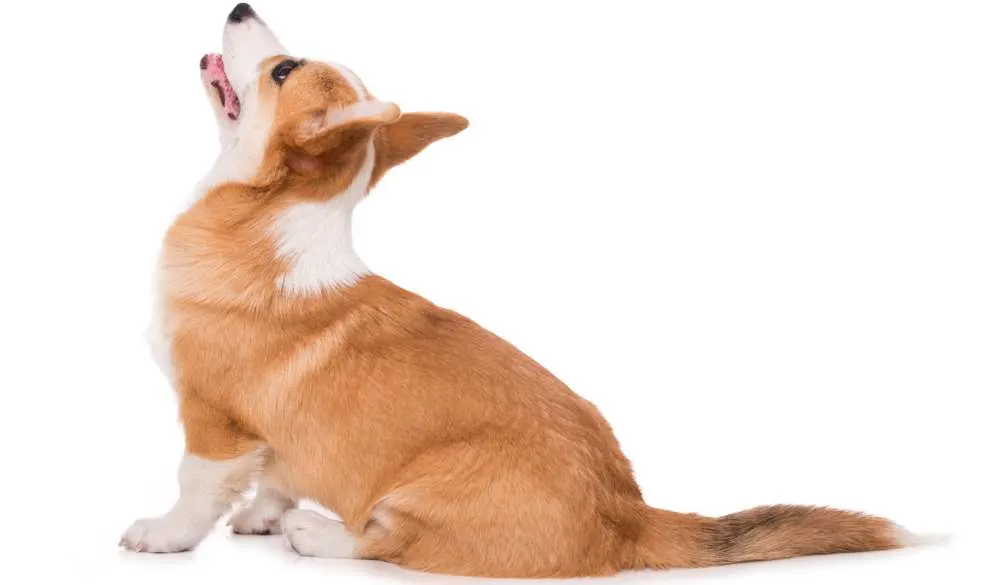
What Is The Difference Between Harmless Bloat and Dangerous Bloat?
Sometimes, a dog can experience mild bloat, which is harmless. It probably happened to your corgi a few times if he ever overate and bloated.
Thus, it is essential to learn the difference between the benign and life-threatening bloat condition.
If we’re using the proper medical terms, the harmless bloat would be gastric dilation, while the dangerous one would be gastric dilation volvulus.
The typical bloat (gastric dilation) happens when a dog’s stomach expands and fills with air, causing discomfort and gas. This can be followed by nausea, diarrhea, and sometimes vomiting.
However, it’s usually just tummy pain and lots of doggy farts.
As long as the stomach doesn’t twist and the dog continues to go regularly, it’s nothing to be worried about.
On the other hand, GDV is an entirely different story. Namely, it’s a life-threatening condition that happens when a dog eats and swallows food too fast, which causes the air to fill the stomach and revolve it.
The stomach then blocks the esophagus and small intestine openings and stops the blood supply to other organs. Moreover, the food gets stuck and begins to ferment, expending the dog’s stomach.
If not treated, it can lead to shock, coma, and death within 2 to 12 hours.

Which Dog Breeds Are Prone To Bloat?
Certain dog breeds are at greater risk of getting bloat. Multiple different factors make certain dogs more susceptible to bloat, like genetics and the body shape.
Overall, dogs with narrow, deep chests seem more prone to this condition than smaller breeds like corgis.
Dog breeds that are prone to bloat are:
- Great Danes
- Akitas
- Boxers
- Doberman Pinschers
- German Shepherds
- Weimaraner
- Irish Setters
- Basset Hounds
- St. Bernard
- Standard Poodles
- Newfoundland
While these are the most affected breeds, don’t forget that any dog can get bloat, even corgi. Having said that, you should know what this condition is, how to recognize it, and treat it on time.
Moreover, if you are a corgi dog owner, it’s needless to say you should keep your eyes wide open at all times. Corgis are extremely sensitive and require constant care and regular vet visits.

What Causes Bloat aka GDV In Dogs?
No one really knows the real reason for bloat. But there’s a possibility why this happens to larger breeds.
Many people think that it is because there’s plenty of room in the abdomen of deep-chested, larger breeds for gas-filled organs to move and twist.
Still, the vets are unsure whether the gas causes the stomach to flip over or the twisted stomach causes the gas to build up.
There are many theories as to why bloat happens.
The first one says that when larger dogs eat a lot of food (or air and water, as a matter of fact) quickly and then exercise right after, the stomach starts to swing and then eventually turns over. That’s why many vets don’t recommend exercise and walking right after a large meal.
The second theory says that stomach contraction weakness with age, so the food and air stay in the stomach for longer. Allegedly, that causes the stomach to grow and twist.
Another theory is that the spleen can cause the stomach to grow and flip over.

Factors That Contribute To Bloat
While it is still uncertain why bloat happens, some factors can put dogs more at risk of developing this serious condition.
These factors are:
- Eating large meals too fast;
- Overeating;
- Exercising right after the big meal;
- Stress;
- Anxiety;
- Genetics (parents or relatives of the dog that suffer from bloat);
- Age – older dogs are more likely to have bloat;
- Elevated feeding;
- Dogs that have one large meal throughout the whole day;
- Dogs which spleens were removed;
- Large or giant breeds are more prone;
- Dog food that contains oils like sunflower oil or animal fat, within the first four ingredients;
- Males are more likely to bloat than females.
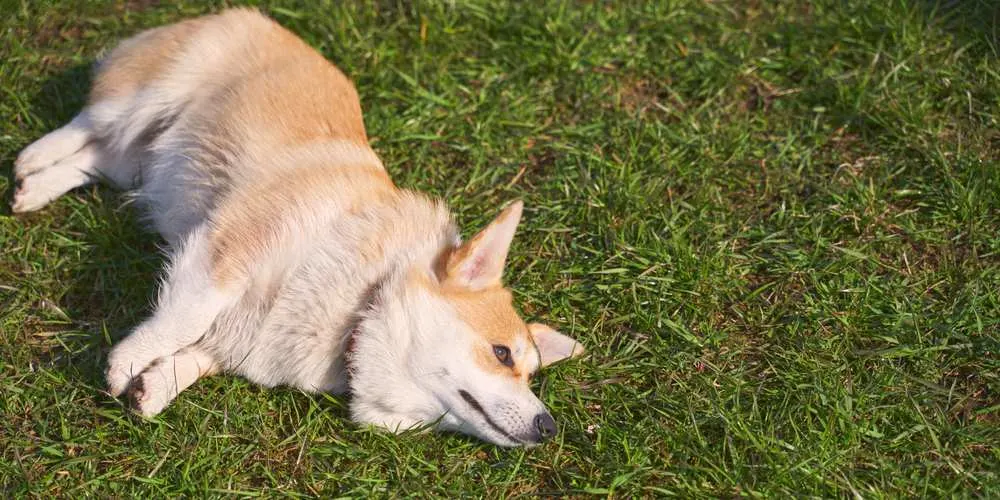
Why Does The Stomach Fill With Gas?
Veterinarians think that there are two possible reasons why a dog’s stomach fills with gas :
- Anxiety
- Diet
Both animals and hoomans swallow more air while eating when they’re anxious. This condition is called aerophagia, and it usually happens to stressed dogs.
If the dog is continually swallowing air, it can cause its stomach to grow in size, changing its organs’ positions.
As for diet, certain foods and the manner in which dog eats can also cause bloat.
And even if the stomach stays in place during bloat, it’s still a severe condition, and the dog should be monitored continuously for other signs.
If the stomach does twist, the situation rapidly becomes dire.

At Which Age Can A Dog Experience Bloat?
A common misbelief is that only older dogs can get bloat. However, that’s not true. Any breed at any age can get bloat or GDV.
We’ve found that dogs as young as 10 months old and as old as 15 years were diagnosed with bloat.
FACT: In the movie ‘Marley and Me,’ the dog Marley (read: the movie’s main star) actually dies from bloat, aka GDV.

Symptoms Of Bloat
Time is crucial when it comes to bloat, so it is important to know the signs. The dog that experiences a bloated tummy will usually swell and become very sensitive to touch.
Apart from the balloon-looking stomach, here are other symptoms to watch out for:
- Dry heaving/gagging (A dog will try to vomit unsuccessfully)
- Pacing
- Restlessness
- Difficulty to move
- Panting
- Drooling
- Difficult and loud breathing
- Collapse
- Nausea
- Belly stretched beyond the standard size
- Abdomen pain (whimpering, whining, crying when touched)
- Weakness
- Fast heartbeat
- Weak pulse
- Pale gums
- Blue, dark, red gums
- An anxious look
- Head and tail hanging down with an arched back
- Inability to sit or lay down comfortably
- Slimy, marshmallow-like saliva (repeated cough, no vomit)
- Swelling between the hips and the lower rib cage
- Unusual or uncharacteristic behavior (refusing to eat, a sudden lack of energy, etc.)
If you notice any of these signs, you must see an emergency veterinarian immediately. Every second could be crucial in saving your four-legged friend.
Important NOTE: Don’t wait for all of the symptoms from the list to emerge. Even if it’s just one or two symptoms we mentioned above, go and see your vet as soon as possible.

How Is Bloat Treated?
The treatment of the bloated dog will depend on how serious the condition is. One thing is for sure – early detection is critical for survival.
As you sometimes can’t see all of the signs at once (for example, the belly won’t bloat immediately), you should watch for other signs rather than the swollen belly.
Now, let’s say you suspect your dog has bloat. The first thing your vet would require once you get your dog to the clinic is complete blood work, urinalysis, and serum chemistry. These analyses will help the vet rule out specific diseases that may mimic the signs of GDV.
The vet might do an X-ray, ECG, and blood gas analysis, which will help confirm the diagnosis and determine its stage if its bloat.
Once your dog is admitted into care, the vet will start with putting a tube down the dog’s throat in order to decrease the pressure and release the gas. However, if the tube can’t pass through the twisted stomach, then the needle is inserted through the abdomen instead.
The vets may also treat your dog with medication, intravenous fluids, and oxygen therapy.
It is also possible they will perform a lavage, which basically means they will flush your dog’s stomach with water to get out the remaining food particles.
Once your dog is stable and the stomach is decompressed, the vet will perform emergency surgery to untwist the dog’s stomach and put it back in the normal position. The damaged tissue will be surgically removed in the process.
Now, dogs who experience bloat are more likely to experience it again. For that reason, the vet may tuck the stomach to the abdominal wall to stop it from turning again.
After the surgery, the vets will give the exact instructions for follow up care and lifestyle and diet changes.
Read Also: Are Corgis Prone To Stomach Problems?
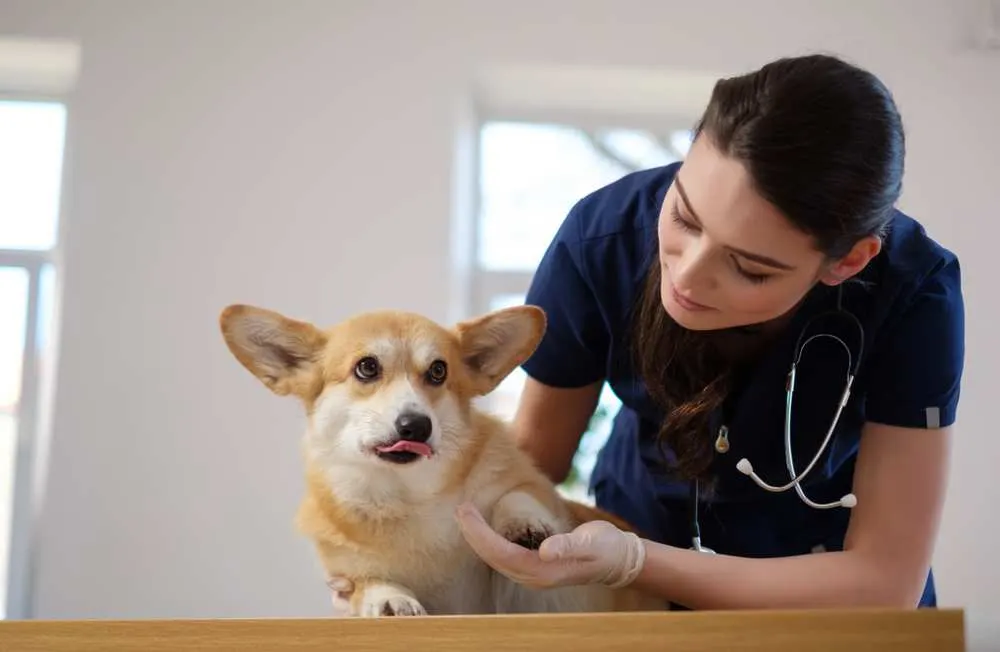
How Long Will My Dog Stay At The Clinic After The Surgery?
It depends on your dog’s state, but it is usually a minimum of 2 to 3 days at the clinic.
That’s simply because post-operative, traumatized tissues release toxins that may cause complications such as heart attack, peritonitis, and even death.
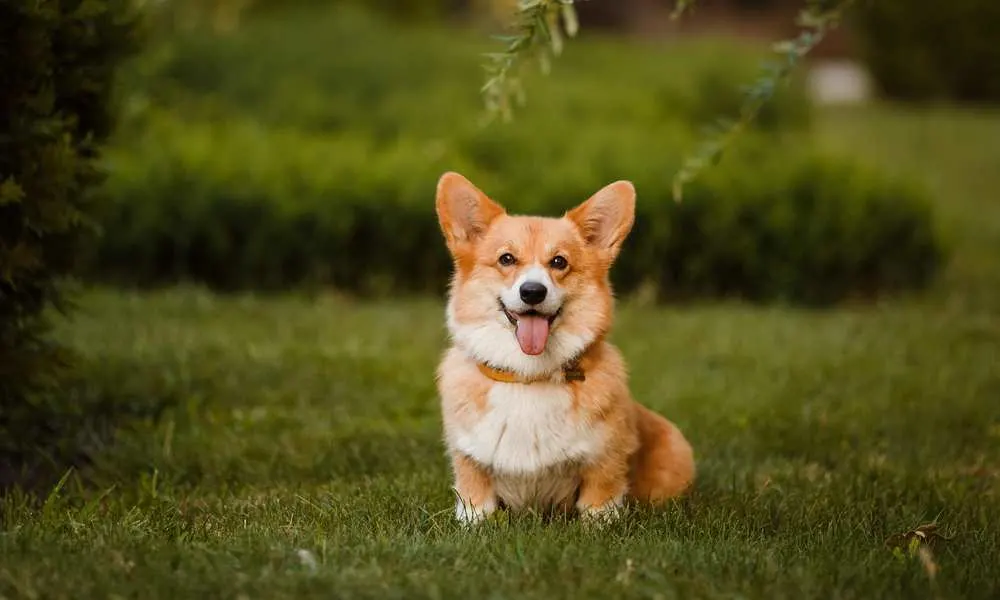
How To Prevent Bloat?
Veterinarians have been searching for ways on how to prevent bloat in dogs for years. All we know for sure is that larger breeds are much more affected than smaller ones.
If a dog suffers from bloat and has relatives who also suffered from it, he shouldn’t be used for breeding. That’s because the puppies will have higher chances of developing that same condition.
Moving on, dog foods that contain soybean or oils and fats in the first four ingredients increase the chances of bloat.
Also, dogs that eat one meal a day or eat fast are more prone to bloat. The same goes for hyperactive or stressed dogs with anxiety.
Here are some tips that might help in preventing the bloat:
- Feed your dog multiple small meals a day instead of one large;
- Avoid gas-producing foods such as beans and cabbage;
- Avoid exercise 1-2 hours before and after the meal;
- If the dog pants, don’t feed him;
- After an exhausting exercise or when overheated, your dog will be very thirsty. Avoid giving your dog large amounts of water right after; provide small amounts of water periodically;
- Don’t let your dog roll on his back right after eating or drinking water; calm your puppy down;
- Always wet the food and let it sit before feeding as most foods swell in liquid and grow twice in size;
- Don’t change your dog’s diet suddenly; do it gradually over the long term;
- If your dog eats fast, try using slow-feeder dog bowls – the ones with spirals, fingers, or center posts;
- If your dog is stressed around meal time, it is better to wait for a while until he settles down and then feed him.
If you’ve done everything right and your dog still gets bloat, it’s important to know it’s not your fault. Most dogs are predisposed to get bloat because of their genes.
On the other hand, Corgis are prone to several diseases, one of which are back problems, allergies, hip and eye problems, obesity, and several others. Bloat is not one of them, but again, it doesn’t mean they are not affected.
Learn More: Genetic Diseases In Corgis

Final Word
Ultimately, corgis can get bloat like any other dog. But luckily for all corgi owners, it happens rarely.
Since overweight dogs (corgis usually are) are also more susceptible to bloat, it is crucial to feed high-quality dog food and maintain a healthy weight.
As this medical condition usually grows into a severe and life-threatening state, it requires medical care as soon as possible.
If you ever suspect your corgi has bloat, or you see any of the symptoms mentioned above, go to the vet clinic immediately, as every minute counts.
Now that you know what bloat is and what causes it, try incorporating the tips we provided in this article regarding feeding and care to reduce your dog’s risk.
Read Also: Pancreatitis In Corgis – Are Corgis Prone To Pancreatitis?

